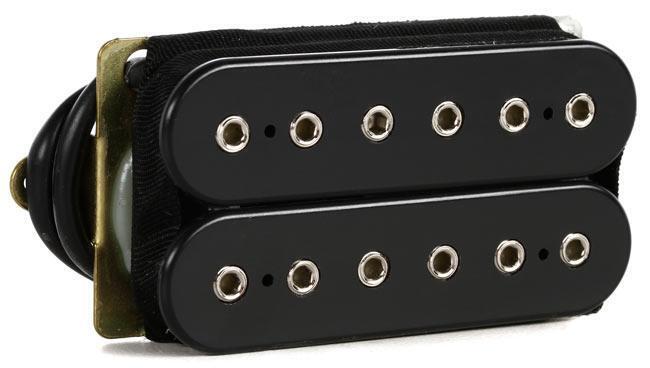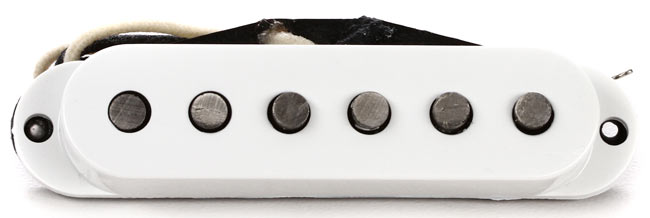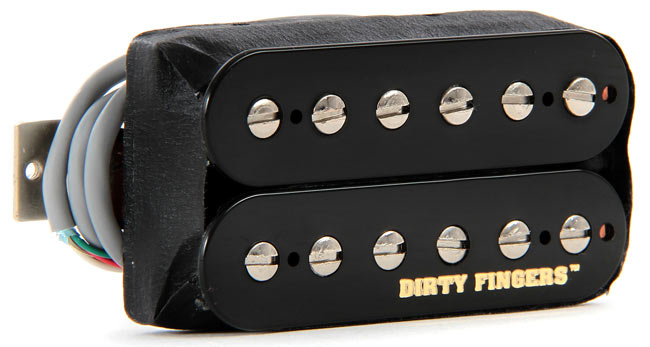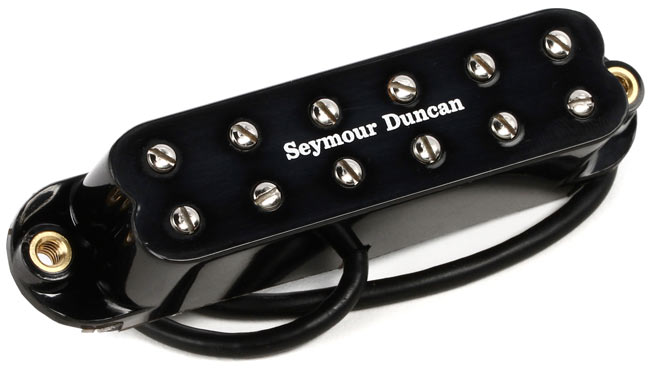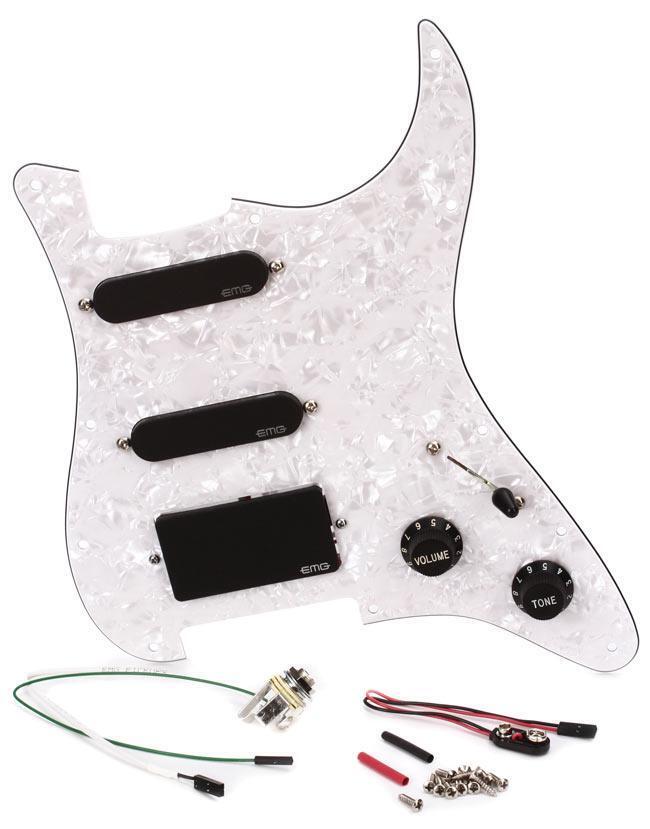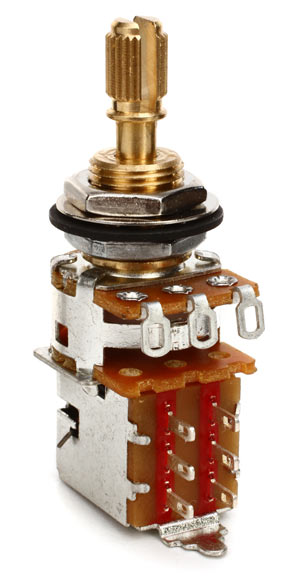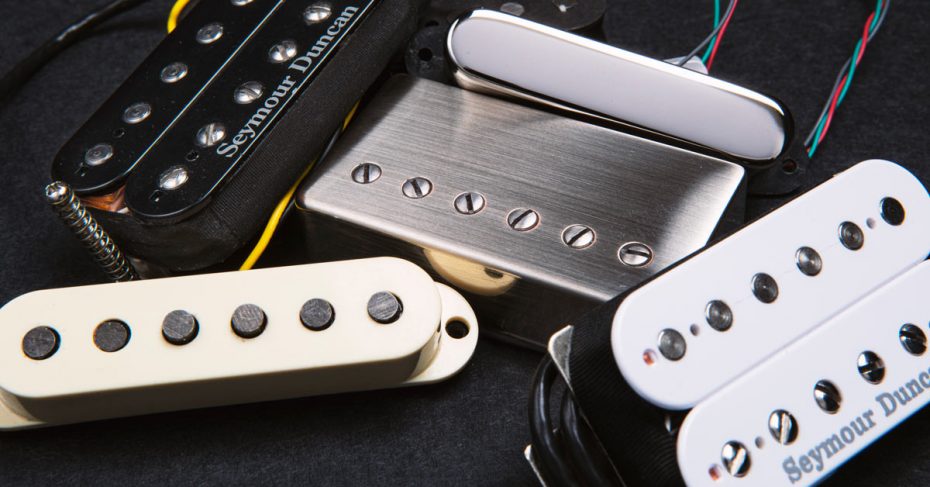
There’s something just not quite right about your guitar tone, but you can’t quite put your finger on what it is. Maybe you should try upgrading your pickups and see how big a difference that can make. Swapping out your pickups is easy to do with a little know-how, and this article will help you choose the right pickups and provide you with what you need to start finding your perfect tone. And if the handiwork is a little overwhelming, you can always call the luthiers at Sweetwater’s Guitar Workshop to do the work for you.
How a Pickup Works
Nearly all guitar pickups rely on magnetism to generate a guitar signal. Typically, the metal guitar string vibrates in the magnetic field around the pole pieces in the pickup, and those vibrations generate an electrical signal.
Magnets
The two most common magnets that you’ll find in pickups are alnico or ceramic. Alnico pickups are cleverly named after the metals that make up the material (Aluminum, Nickel, and Cobalt). The metal ratio is designated by a roman numeral. For example, Alnico II is highly sought after for its warm, vintage tone while Alnico V has more low end and a bit less midrange.
Ceramic magnets are often found in active or “hot” pickups. With clear, focused high and low ends, these are the preferred pickups for metal players since they provide plenty of output and punch.
Coils
The pickup coil is made up of thousands of winds of insulated copper wire. This is one of the most important things to consider when choosing a new pickup, as the number of winds will determine how “hot” the pickup is. You can easily measure the strength of your pickup by attaching a multimeter to the pickup leads. A pickup can measure anywhere from 6 Kohm to 16 Kohm. More winds will increase the output of your pickups, but you may sacrifice a little high end. Check out a pickup’s resistance rating before you buy. Many pickups will have a resistance spec listed on their product page.
Single-coil and Humbuckers
Now that we know a little bit about how a pickup is constructed, we need to limit our options to what will actually fit.The first thing to consider is whether your guitar body has been routed for a single-coil or humbucker pickup.
What’s the difference? Well, a humbucker is basically two single-coil pickups, wired out of phase with each other, with the poles facing in opposite directions. This design bucks (cancels) the hum since any hum induced in one pole piece is canceled by adding the inverse of the same hum from the reverse-wired pole piece. If you’re going to install a humbucker in a guitar routed for a single-coil or vice versa, it’s going to require routing or some kind of modification to the instrument.
You may want to take a look under the pickguard to see if your guitar has the option for both. Many Stratocasters and Telecasters are routed for a humbucker in the bridge position but come stock with a single-coil pickup. For these, all you have to do is upgrade your pickup and then find a pickguard that will accommodate it.
What’s Your Signature Sound?
You’ll have to do some pretty deep soul-searching to realize your signature sound. What do you do when you crave the fat, juicy low end of a humbucker, but your guitar is routed for a single-coil? Don’t sweat it — Seymour Duncan has you covered. The Little ’78 Humbucking Strat Pickup is a humbucker designed to fit in a single-coil rout. This opens up a world of possibilities, so don’t be afraid to experiment with different pickup configurations.
Active vs. Passive
If your guitar does not require some sort of battery, then it’s a safe bet you have passive electronics. That doesn’t mean you’re stuck with them, though. In an active pickup, the signal is boosted by a preamp. The high output of active electronics will drive your amp harder and break up easier if that’s what you’re after. But, beware — active electronics will need a 9V or two for power. Keep some spare batteries on hand at your gigs and you’ll be fine.
Bright or Warm?
It’s easy to get caught up in all the different pickup options available, but let’s not forget that you’ll be installing it into a big chunk of wood. You’ll need to consider how the personality of the pickup will mingle with your neck and body tonewoods. For example, a Strat with an alder body will be naturally snappy with a lot of high end. A trio of single-coils will accentuate this. To tame the high end, you might want to go with a humbucker to mellow out the sound. Conversely, a mahogany hollowbody with a rosewood neck might benefit from a bright pickup so that the highs don’t get lost in all the low end inherent to the instrument.
Coil Splitting
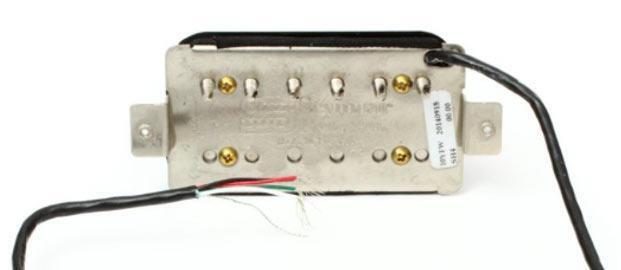
Do you want to be able to coil split your humbuckers, throw it out of phase, and access parallel or series wiring with a flick of the wrist? If versatility is important, then take a look at 4-conductor pickups. A 4-conductor pickup will give you many more options than a single-conductor pickup. “4-conductor” refers to the combined number of starts and finishes that leave a humbucker’s pickup coils.
In other words, each coil has a start and finish that can be wired up for different pickup functionality. By far, the most popular mod for these is to coil split your humbucker. This is easily done with a proper schematic and a push/pull pot. This mod gives you instant access to a single-coil by simply pulling up on your volume or tone knob.
The Case for Vintage Pickups
There are some pickups that have reached perfection and just shouldn’t be tampered with. Vintage-style pickups will be modeled after pickups made before the ’70s and will have the same components and windings as the original. Sweetwater has an enormous selection of vintage-style pickups and the most knowledgeable staff in the industry to help you pick the perfect pickup.
You Pick ’em — We’ll Install ’em
Upgrading your guitar pickups is a great way to overhaul your tone and breathe new life into your guitar. The different combinations of pickup types and wiring options give you practically unlimited tonal options to explore. If you need a professional to do the wiring, you can shoot us an email at Sweetwater’s Guitar Workshop today! Or call your Sweetwater Sales Engineer at (800) 222-4700.




